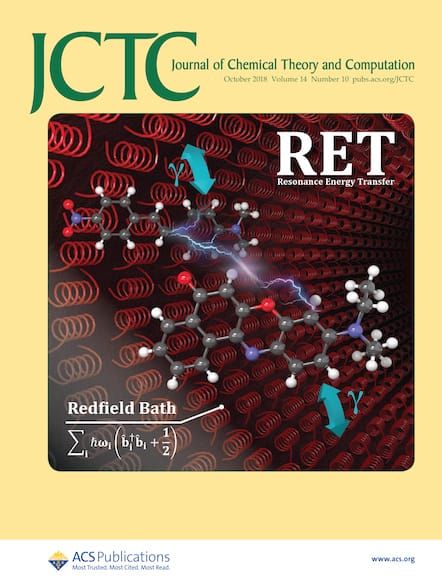评估抗体结合亲和力的计算策略。
IF 5.5
1区 化学
Q2 CHEMISTRY, PHYSICAL
引用次数: 0
摘要
结合亲和力的准确评估在药物发现中至关重要,以确定与靶标结合强烈的分子,同时最大限度地减少脱靶效应。尽管绑定亲和性计算在理论上有很好的定义,但它们需要对配置空间进行详尽的采样,这一步骤通常需要大量的计算资源。在这项研究中,我们比较了不同的计算抗体结合能的方法,这些抗体靶向从CXCR2(一种gpcr家族蛋白)的n端衍生的肽。与之前的一些报道相反,我们发现平衡分子力学泊松-玻尔兹曼表面积(MMPBSA)计算比平均力评估的非平衡势更符合实验结合亲和力,强调了这些方法的系统依赖性性能。我们还观察到,当MMPBSA与副本交换分子动力学相结合时,准确性有一定的提高,尽管计算成本要高得多。相反,基于罗塞塔力场的计算得出的结果与实验数据并不相关。我们将这些发现归因于两个因素,这可能会限制一些广泛用于计算结合能的方法的适用性:所研究的抗体的高效力以及抗体与肽之间疏水相互作用的优势。总的来说,这项工作为优化硅抗体筛选策略提供了重要的见解。本文章由计算机程序翻译,如有差异,请以英文原文为准。
Assessing Computational Strategies for the Evaluation of Antibody Binding Affinities.
Accurate evaluation of binding affinity is critical in drug discovery to identify molecules that bind strongly to their targets while minimizing off-target effects. Although binding affinity calculations are theoretically well defined, they require exhaustive sampling of configurational space, a step that often requires significant computational resources. In this study, we compare different methods for calculating the binding energy of antibodies targeting a peptide derived from the N-terminus of CXCR2, a GPCR-family protein. Contrary to some previous reports, we find that equilibrium molecular mechanics Poisson-Boltzmann surface area (MMPBSA) calculations yield better agreement with experimental binding affinities than nonequilibrium potential of mean force evaluations, underscoring the system-dependent performance of these methods. We also observed a modest improvement in accuracy when MMPBSA is combined with replica exchange molecular dynamics, albeit at a significantly higher computational cost. Calculation based on the Rosetta force field, instead, produced results that did not correlate with the experimental data. We attribute these findings to two factors, which could limit the applicability of some methodologies that are widely used in computing the binding energy: the high potency of the antibodies studied and the dominance of hydrophobic interactions between the antibodies and the peptide. Overall, this work provides important insights for optimizing in silico antibody screening strategies.
求助全文
通过发布文献求助,成功后即可免费获取论文全文。
去求助
来源期刊

Journal of Chemical Theory and Computation
化学-物理:原子、分子和化学物理
CiteScore
9.90
自引率
16.40%
发文量
568
审稿时长
1 months
期刊介绍:
The Journal of Chemical Theory and Computation invites new and original contributions with the understanding that, if accepted, they will not be published elsewhere. Papers reporting new theories, methodology, and/or important applications in quantum electronic structure, molecular dynamics, and statistical mechanics are appropriate for submission to this Journal. Specific topics include advances in or applications of ab initio quantum mechanics, density functional theory, design and properties of new materials, surface science, Monte Carlo simulations, solvation models, QM/MM calculations, biomolecular structure prediction, and molecular dynamics in the broadest sense including gas-phase dynamics, ab initio dynamics, biomolecular dynamics, and protein folding. The Journal does not consider papers that are straightforward applications of known methods including DFT and molecular dynamics. The Journal favors submissions that include advances in theory or methodology with applications to compelling problems.
 求助内容:
求助内容: 应助结果提醒方式:
应助结果提醒方式:


